Since Velcro was invented in the 1940s, it has been used on many things!
Gloves, shoes, and even compression gear have been improved by this convenient and versatile fastener.
Typically, Velcro is easier to use and maintain than a zipper.
Read on to learn more about how it is used in compression wraps, bandages, and sleeves.

Velcro Compression Socks are great because they:
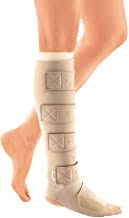
- Provide support
- Improve circulation
- Treat varicose veins / Stop varicose veins
- Treat spider veins
- Prevent venous insufficiency
- Treat and prevent edema
- Prevent clotting
Knee-High and Thigh-High
Velcro thigh-high and knee-high compression stockings are adjustable and made using short-stretch materials. These materials are used in straps that wrap around the foot, ankle, calf, knee, or thigh. Velcro fasteners are then used to secure the support garment.
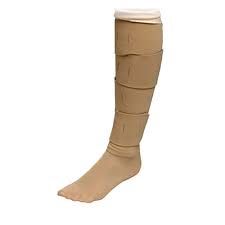
The design of these socks allows you to easily apply or remove them at any time. The short-stretch material of the socks provides a therapeutic support profile with a low resting pressure and high working pressure.
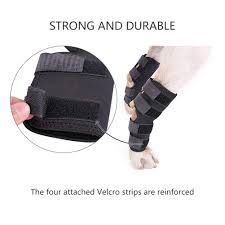
This helps with:
- Reducing venous hypertension
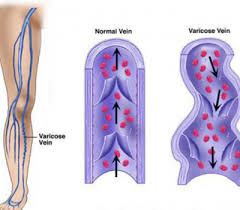
- Reducing edema
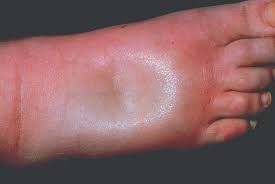
- Maximizing venous return
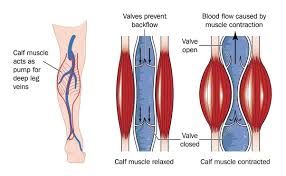
- Promoting wound healing regardless of your activity levels as a patient
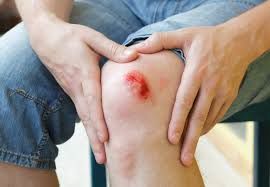
Advantages
The major advantages of using compression socks with Velcro instead of a regular compression sock include:
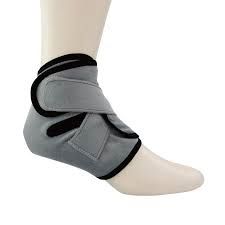
- Self-application
- Adjustability
- Product conformability
- Cost
Self-Application
One of the best advantages of thigh-high or knee-high compression socks with Velcro is ease of application. This helps both healthcare providers and patients alike. Unlike traditional support bandages, compression socks with Velcro do not have to be applied by trained healthcare professionals. Patients can be taught to use and care for the thigh-high or knee-high compression socks with Velcro without assistance.
Self-application means that patients can more easily take care of their own health. This is especially helpful for people with excessive drainage and sensitive skin as well as those who need topical medications since they will need to take their socks off more often.
Adjustability
Anyone can be trained to adjust the support levels of thigh-high or knee-high compression socks with Velcro. This is a great advantage over traditional compression socks, which only provide one level of pressure.

This adjustability also helps with patient compliance, which improves the effectiveness of compression therapy. If patients need stronger or weaker support, they can change it themselves without the hassle of scheduling and going to a doctor’s appointment.
Product Conformability

Knee highs and thigh-high compression gear with Velcro is available in a wide variety of styles and sizes. There are different coverage options to meet different needs. In addition, most high-quality compression stockings and sleeves are sized separately for the feet, legs, thighs, and legs. This means that patients can ensure they get a compression sock with customized leg support.
Cost
Knee-high and thigh-high compression stockings with Velcro can save you money in the long run. As you treat your circulation problems, your legs will likely shrink as swelling decreases. Using adjustable stockings means you will not need to buy different sizes of compression stockings or disposable compression wraps or bandages to treat your conditions. One type of Velcro sock will do the trick!
Velcro compression gear can also save you money when it comes to healthcare costs. Since you can adjust the sock at home, you won’t need to see your doctor as frequently.
Why Use It?
Velcro is frequently used in a variety of products because it is user-friendly and versatile. It makes life easier for many people.
Most modern Velcro fasteners are made of nylon and polyester. They come with two components. The first is a strip of fabric with tiny hooks that temporarily attach to the second strip of fabric, which has small loops. Velcro can stay fastened for a long time and is very sturdy.
A recent study showed that knee highs or thigh-high compression socks with adjustable Velcro are more effective in reducing venous edema than inelastic bandages. The study included 36 patients with edema. Both the effects and comfort of the socks were considered when analyzing the results.
The study found that patients with Velcro compression socks were more comfortable and could more easily wear shoes. The final report concluded that these garments were effective because they save more money, do not require the supervision of specialized medical staff, and are more effective in reducing chronic venous edema.
Types of Velcro
There are several types of Velcro available on the market to meet different needs. Compression gear may include any of the following types:
- Pre-cut ovals
- Pre-cut hook fasteners
- Pre-cut adhesive dots
- Sew-on (soft, flexible, and snag free)
- Pre-cut hook fasteners
- Hook and loop
- Adhesive-backed Velcro
Popular Articles on ComproGear
Car air purifier hepa filter for car
Rose toy what is a rose for females?
Penis straws perfect for a bachelorette party
Factors to Consider
The most common type of Velcro used in thigh-high or knee-high compression gear is the hook and loop. It consists of one strip of fabric with tiny hooks and another with tiny loops. This system is capable of forming a very strong bond.
Here are some important things to consider when comparing different models of Velcro compression gear:
Closure Strength
- Closure strength is one of the most important considerations when you are dealing with velcro. It encompasses several factors, including:
Velcro Peel
- How easily do the velcro strips disengage? Do they disengage in succession like unzipping a jacket?
Velcro Tension
- How strong is the resistance of the material to being pulled apart vertically?
Shear
- How strong is the resistance of the material to being pulled apart horizontally?
Cycle
- How many times will you be able to open and close your velcro fastener? Your thigh-high or knee-high compression socks or compression wraps with velcro will need to have high-cycle hooks and loops.
Type of material
- Velcro can be made using different types of fabric, each with its own advantages.
High-Tech Hooks (HTH)
- This technology, developed by velcro, makes use of advanced polymers to form personalized hook and loop systems. It can also work for custom applications when you adjust the shape and size of the hooks and loops.
Woven
- Woven velcro is the most common and versatile hook and loop fastener because it offers a long cycle life, is easy to dye, and very easy to sew.
Non-Woven
- Non-woven velcro hook and loop systems are made by arranging fibers in an asymmetrical web. They are great for lamination and low-cycle applications.
Knit
- Knit velcro materials are used for disposable, lightweight products. They are also sometimes used when there is a large area of hooks and loops.
How to Manage a Patient
Managing a patient who needs compression therapy is not exactly the easiest task in the world. It requires a lot of the healthcare providers because they have to pay attention to detail and work closely with the patient. There are a couple of factors to consider when managing a patient who is using thigh-high or knee-high compression gear as part of their treatment regimen, including:
Hygiene and Skin Care
It is important to inspect patients’ legs each time they visit the clinic. Ensure they are washed and well moisturized. This is essential for the patients’ health and well-being.
Constant Assessment of Compression Gear
Unfortunately, ulcers are sometimes a side effect of edema treatment. This makes it extra important to regularly assess patients’ legs. At the beginning, when the risk is highest, patients should be seeing their care provider twice a week. As treatment progresses, they can move back to once per week. Alternatively, patients may have in-home health providers who have experience changing compression socks and wraps. It is also important that the patients’ legs are regularly measured as swelling decreases so that they are donning the correct stocking size. (ComproGear Compression Socks come in sizes Small, Medium, Large, XL, 2XL, 3XL, 4XL, 5XL, and 6XL)
Velcro Footwear
Compression gear may prevent patients from wearing their normal shoes. One solution is to give them post-op shoes. These protect the foot and allow the patient to move around more easily during treatment.
No Wrinkles
Some side effects of knee-high or thigh-high compression socks with Velcro are discomfort, rubbing, and blistering. Any of these could result in an iatrogenic injury, which in turn, could lead to further ulceration.
Your healthcare provider may instruct you to dorsiflex your foot while he or she helps you put on your compression gear. This means that the garment will go on more smoothly, making you more comfortable and preventing injuries. Your provider may also use foam dressing pads to help protect your tibial areas, metatarsal heads, Achilles tendon, and anterior ankle.
Avoid sliding
Multilayered compression wraps are usually heavier and thicker than other types of compression gear. As a result they are more likely to slide as a unit, especially if you have legs that are irregularly shaped. To reduce this effect, you have to wrap the leg with sufficient tension and then apply a thick ointment. The ointment makes the cotton layer of the pressure garment stick better and reduces slippage. It has the added effect of keeping the legs well moisturized.
Bathing and Showering
Compression garments can be worn for up to a week if they stay dry. Unfortunately, however, this can pose a problem when it comes to bathing and showering. Some patients choose to bathe at a sink or leave their foot hanging out of a bathtub. Other patients, particularly those who are less mobile, may struggle with those options.
Patients may also choose to cover their compression gear while showering. There are devices that are specially designed to ensure dressings and casts stay dry. Many come with non-slip surfaces near the foot. If you choose to just cover your leg in a plastic bag, make sure you have other measures in place to prevent falls. For example, you can have someone nearby to help or put down anti-slip pads.
Have a Contingency Treatment Plan
It is important that healthcare providers properly educate patients who plan to use compression therapy. Success strongly depends on patient compliance. If they take off their knee-high or thigh-high compression socks with Velcro too often or too early, it can negate any progress that has been made.
Stickiness
Some thigh-high or knee-high compression socks for men are made with an adhesive layer that can be sticky. It may attract dirt and lint or cling to your pant legs. It may also restrict movement when you lie down. This problem is easily solved by wearing a plain stockinette over your compression gear. This will also make it easier for you to put on shoes while wearing Velcro compression gear.
Conclusion
Velcro compression socks are an innovative form of compression therapy that works best for patients who have problems donning regular compression garments. They work by reducing swelling in different parts of the legs and feet. Compression gear also helps to reduce symptoms of venous insufficiency, chronic edema, and lymphedema by improving circulation. You can count on knee-high and thigh-high compression socks with Velcro to provide adequate support for your legs at all times!
This page last updated December 11, 2022
